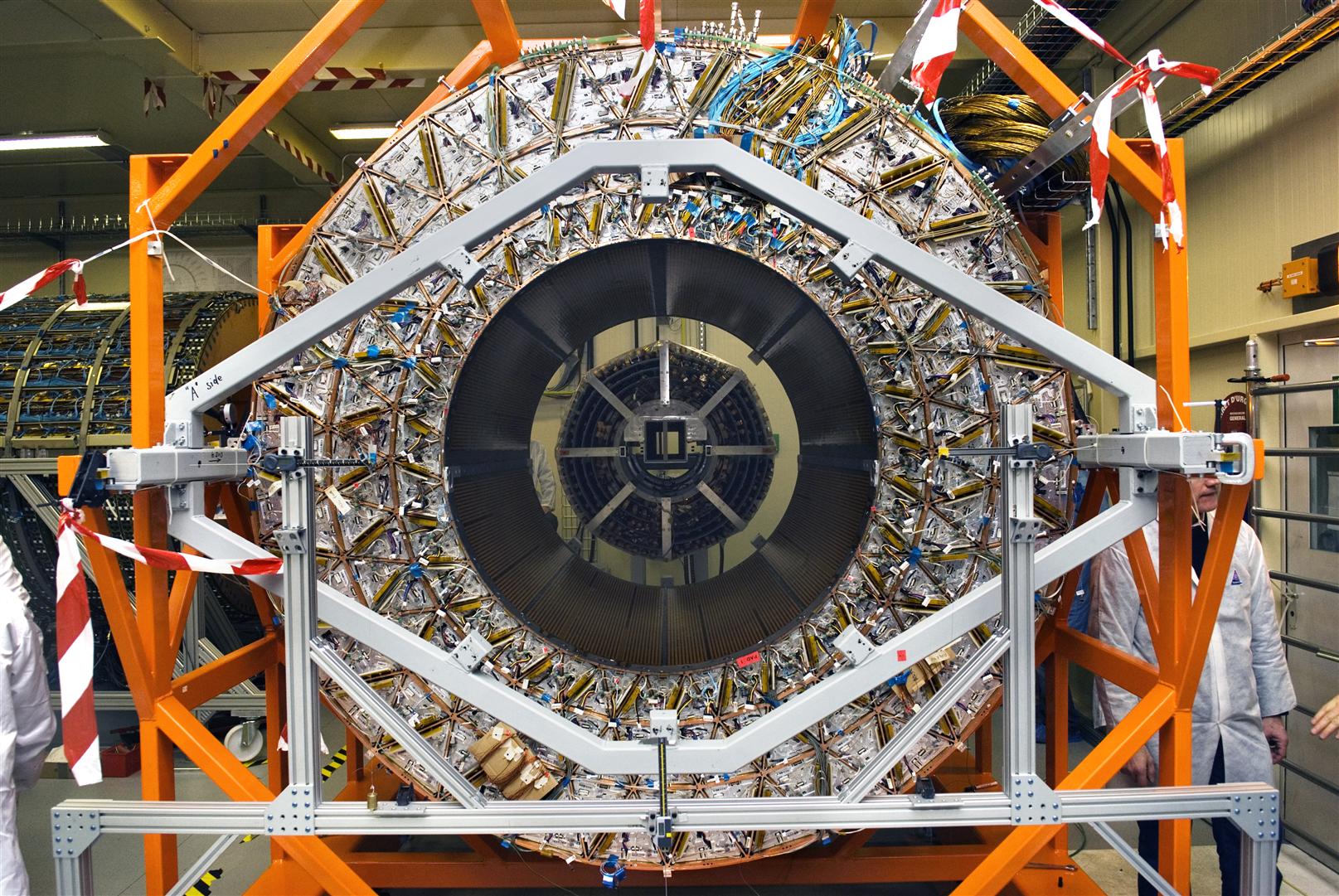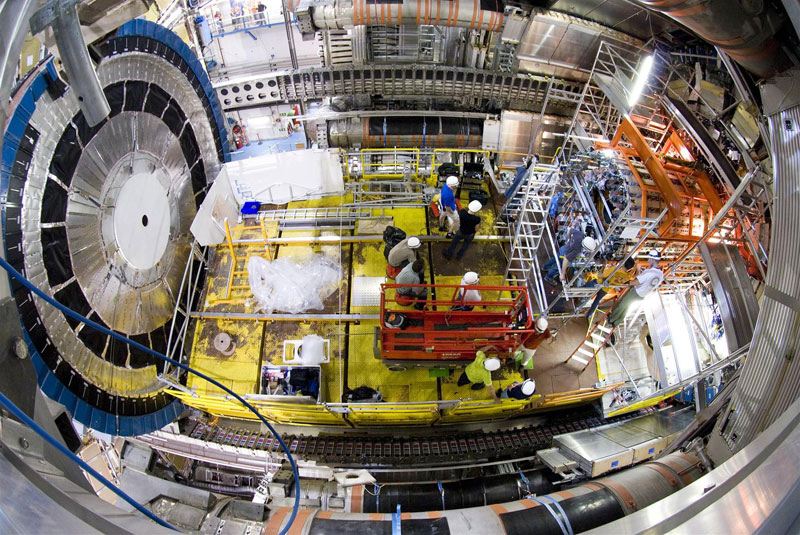
The Inner Detector
It is the first part of ATLAS to see the decay products of the collisions
It is very compact and highly sensitive. It consists of three different systems of sensors all immersed in a magnetic field parallel to the beam axis. The Inner Detector measures the direction, momentum, and charge of electrically-charged particles produced in each proton-proton collision.
The main components of the Inner Detector are: Pixel Detector, Semiconductor Tracker (SCT), and Transition Radiation Tracker (TRT).
Pixel Detector
Located just 3.3 cm from the LHC beam line, the Pixel Detector is the first point of detection in the ATLAS experiment. It is made up of four layers of silicon pixels, with each pixel smaller than a grain of sand. As charged particles burst out from the collision point, they leave behind small energy deposits in the Pixel Detector. These signals are measured with a precision of almost 10 μm to determine the origin and momentum of the particle. The Pixel Detector is incredibly compact, with over 92 million pixels and almost 2000 detector elements.
- 92 million pixels (92 million electronic channels).
- Silicon area approx. 1.9m2. 15 kW power consumption
- Pixel size 50 x 400μm2 for the external layers and 50 x 250 μm2 for the innermost layer (IBL)
- 4-barrel layers with 1736 sensor modules
- 3 disks in each end-cap with 288 modules

Semiconductor Tracker
The Semiconductor Tracker surrounds the Pixel Detector and is used to detect and reconstruct the tracks of charged particles produced during collisions. It consists of over 4,000 modules of 6 million “micro-strips” of silicon sensors. Its layout is optimised such that each particle crosses at least four layers of silicon. This allows scientists to measure particle tracks with a precision of up to 25 μm - that’s less than half the width of a human hair!
- 4,088 two-sided modules and over 6 million implanted readout strips (6 million channels)
- 60m2 of silicon distributed over 4 cylindrical barrel layers and 18 planar endcap discs
- Readout strips every 80μm on the silicon

Transition Radiation Tracker
The third and final layer of the Inner Detector is the Transition Radiation Tracker (TRT). Unlike its neighbouring sub-detectors, the TRT is made up of 300,000 thin-walled drift tubes (or “straws”). Each straw is just 4 mm in diameter, with a 30 μm gold-plated tungsten wire in its centre. The straws are filled with a gas mixture. As charged particles cross through the straws, they ionise the gas to create a detectable electric signal. This is used to reconstruct their tracks and, owing to the so-called transition radiation, provides information on the particle type that flew through the detector, i.e. if it is an electron or pion.
- 350,000 read-out channels
- Volume 12m3
- Straw tubes with 4mm diameter, with centred 0.03mm diameter gold-plated tungsten wire
- 50,000 straws in Barrel, each straw 144 cm long.
- 250,000 straws in both endcaps, each straw 39 cm long
- Precision measurement of 0.17 mm (particle track to wire)

More




